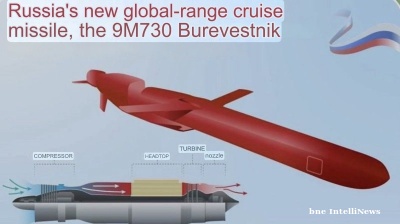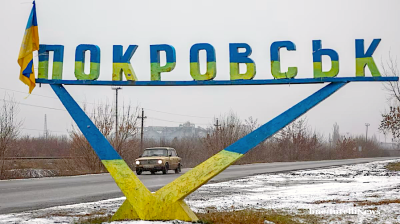Pressure fell in both branches of the Nord Stream gas pipeline from the giant Russian Yamal Arctic gas fields to Germany during the evening of September 26, reportedly due to a leak in the NS2 pipeline.
The leaks were reported by the Danish authorities, which ordered ships to maintain a 5-km radius away from the pipelines that run under the Baltic Sea through Danish waters, describing the area as “dangerous for ship traffic.”
Russian state-owned gas giant Gazprom referred questions about the leakage to the Nord Stream 2 operator.
"Overnight the Nord Stream 2 landfall dispatcher registered a rapid gas pressure drop on Line A of the Nord Stream 2 natural gas pipeline," Nord Stream 2's operator said in a statement adding pressure in the pipeline dropped from 105 to 7 bars overnight.
Nord Stream 1 has been closed down since September, when Gazprom indefinitely shut down gas flows on September 5, blaming more technical problems with the compressor units. The Nord Stream 2 pipeline has never been used. The pipeline was completed last year, but documents needed for its regulatory approval to put the pipeline into operation were withdrawn in the first days after the war in Ukraine started in February. However, both pipelines were full of “technical gas” and capable of being turned on at a day’s notice.
The leakers were reported near the island of Bornholm off the coast of Sweden and about 100 km short of where the pipelines make landfall in Germany, Reuters reports.
The German government said it was in contact with the Danish authorities and working with local authorities to determine the cause of the leaks. Gazprom has yet to comment or offer any explanation.
"The reasons are being investigated," Nord Stream AG said on its website, without disclosing further information, as cited by Reuters.
Gas prices at the Dutch TTF spot market have yet to react to the leaks. Gas prices have fallen in the last weeks after European governments rolled out massive support packages to cope with the energy crisis and talk of introducing price caps on gas gathers momentum. Gas was trading at €176/MWh ($1,808 per thousand cubic metres) on September 26, but still up 164% year on year.
Pressure on gas prices have eased after European storage tanks reached the 80% full target set by the European Commission at the start of year, a month ahead of schedule. The EU tanks were 87.7% full as of September 26 and Germany’s tanks were 91.3% full. Italy’s tanks, another key market, had tanks 89.6% full on the same day.
The German network regulator president, Klaus Mueller, said on Twitter that the “situation is tense” but he had no information as to what had caused the leak.
"We are currently in contact with the authorities concerned in order to clarify the situation. We still have no clarity about the causes and the exact facts," said a statement from the German economy ministry, according to reports.
Russia has been shutting down gas supplies to European countries over the last year as part of an economic war between East and West. Complete termination of gas flows to Bulgaria, Denmark, Finland, Lithuania, the Netherlands and Poland and voluntary reductions by, or partial cut-offs towards, Austria, the Czech Republic, France, Germany, Italy and Slovakia have already been put in place. The September 26 gas leak happened a day before the ceremonial launch of the Baltic Pipe carrying gas from Norway to Poland that will entirely replace the 10bn cubic metres of gas Warsaw used to import from Russia – the first EU member to completely wean itself off Russian gas.

News

Russia test fires its Burevestnik nuclear-powered cruise missile
Russia’s Burevestnik nuclear-powered cruise missile has no analogues in the world, Russian President Vladimir Putin said, as the Kremlin escalates the unfolding missile arms race with Ukraine another notch.

Russia claims to surround Pokrovsk
Russia’s chief of the general staff Valery Gerasimov triumphantly reported to Putin that 31 Ukrainian battalions have been encircled in Pokrovsk and 18 battalions in Kupyansk, the hottest spot in the war.
.jpg)
Brazil and US to start urgent tariff negotiations after Trump-Lula meeting
Brazilian President Luiz Inácio Lula da Silva and US President Donald Trump have agreed to start immediate negotiations on tariffs and sanctions imposed by Washington, following a meeting in Malaysia that sought to ease trade tensions.

Cambodia and Thailand agree peace deal
Thailand and Cambodia have agreed a peace deal to mark the end of a conflict earlier in the year as Cambodian Prime Minister Hun Manet and Thai Prime Minister Anutin Charnvirakul attended a signing ceremony overseen by US President Donald Trump.



